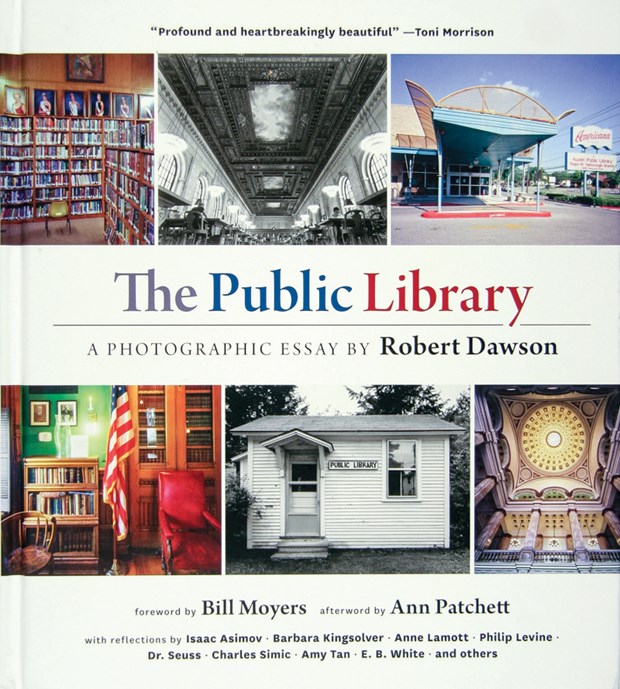The Public Library by Robert Dawson, Princeton Architectural Press, 192 pages, $41.
A library may be as expansive as a cathedral, like the Central Library in Philadelphia that houses over seven million items or the ornate libraries that Carnegie constructed around the country.
They can also be tiny structures modestly built to serve a small community like the trailer set beneath a roof to offer shade from the Death Valley sun. No matter what the size they all serve a common goal of free information.
Eighteen years ago Robert Dawson took his first photographs of libraries. The pictures were often taken as a part of another project or trip. Dawson found himself drawn to these community centres and would seek them out whenever the opportunity came up. Family road trips incorporated side journeys to libraries of all sizes and designs.
In 2011 Dawson made the first extensive Library road trip traveling with his son for eight weeks through 26 states eventually driving over 11,000 miles and photographing 189
libraries. The following year saw another trip, this time for four weeks, resulted in 10,000 miles and 110 libraries. These trips filled in the blanks of his project. They saw not just the fabulous architecture of great libraries but also the desolation of closed and abandoned ones, like the damaged structures in post-Katrina New Orleans.
Dawson's photographs capture the many aspects that a library is to a community. Refuge, study hall, meeting place, a place with a shared history, and a modern structure with a view to the future, these things and more are all there in the carefully composed images.
In addition to the photographs, short essays are interspersed throughout the book from a variety of literary figures that include Bill Moyers, Barbara Kingsolver, Amy Tan and Ann Patchett. They speak of the significance of libraries in their lives and celebrate the spirit of the sharing of knowledge.



